An HCDI Healthy People 2030 Spotlight: Greater Health Literacy through Improved Health Communication Drives Positive Health Outcomes
By HCDI Communications
October is Health Literacy Month, a time when the country celebrates and recognizes the importance of greater health literacy and creating a more equitable world, where even our most vulnerable receive quality healthcare. Health literacy is a central focus of the Office of Disease Prevention and Health Promotion’s Healthy People 2030.
Healthy People 2030 seeks to improve health communication so people can easily understand and act on health information. Generally, people who don’t understand health information are less likely to get preventative health care and are more likely to have health problems. Health care providers, information technology, electronic health record systems (EHRs), health departments, and news outlets are all responsible for driving health literacy through accessible, easy-to-understand information. They are also responsible for ensuring information is available in multiple languages for people who have limited English proficiency or who speak another language all together.
Many people have trouble talking to their doctor, so good communication between health care providers and patients is part of quality care. According to Healthy People 2030, when health care providers communicate clearly and use strategies such as teach-back and shared decision-making methods, they help people make more informed health decisions.
The teach-back method is when doctors ask patients to describe how they’ll follow the instructions in their own words while shared decision-making means patients and their doctors work together to make decisions. These strategies to improve communication between health care providers and patients can lead to better prevention, diagnosis, treatment, and self-management of diseases as well as improved patient satisfaction.
Another Healthy People 2030 objective involves making electronic health information easy to read and use. The 21st Century Cures Act allows for improved patient access to online medical records in a secure, easy-to-understand format. At the same time, there are disparities in the use of information technology, like electronic health records, for health care by income, age, and sex, especially as it relates to senior citizens. Educating people on the use of IT for health care and increasing internet access can help reduce these disparities and further promote informed health decisions.
Although not measured, Healthy People 2030 also suggests promoting health and safety information in both English and Spanish through health departments and news media channels (i.e., website, social media, TV).
Healthy People 2030 Health Literacy Objectives
The latest Healthy People 2030 data indicates that while progress has been made there is still more work be done to improve communication between patients and their health care providers. The data also shows that patient online access to EHRs is improving and even exceeding expectations.
Communication with health care providers
| Objective | Most Recent Data | Target | Baseline | Status |
| Increase the proportion of adults whose health care provider checked their understanding
|
25.6 % (2019) | 32.2% | 26.6% (2017) | Little to no change |
| Decrease the proportion of adults who report poor communication with their health care provider | 9% (2019) | 8% | 8.9% (2017) | Little to no change |
| Increase the proportion of adults whose health care providers involved them in decisions as much as they wanted
|
57.2% (2020) | 62.7% | 52.8% (2017) | Improving |
Online access to electronic health records
| Objective | Most Recent Data | Target | Baseline | Status |
| Increase the proportion of adults offered online access to their medical record
|
72% (2020) | 63% | 61.4% (2017) | Target met or exceeded |
| Increase the proportion of adults who use IT to track health care data or communicate with providers
|
83.3% (2020) | 87.3% | 80% (2017) | Improving |
Other high priority public health issues Healthy People 2030 has identified include increasing the:
- Proportion of people who say their online medical record is easy to understand
- Proportion of adults with limited English proficiency who say their providers explain things clearly
- Health literacy of the population
HCD International Drives Health Literacy
HCD International’s H.E.A.R.T. (Health Equity Advanced Response Team) engages with some of the hardest to reach Medicaid and Medicare health plan members and community residents to inform, educate, and connect vulnerable populations to health care they deserve. Our engagement specialists address any health concerns and Social Determinants of Health (SDoH) barriers that may affect their ability to attain quality care by providing resources for health plan redeterminations, non-emergency medical transportation services, mental health support, healthy food access, safe housing and more. Often, these vulnerable members and residents are grateful for our call to support their health and well-being.
HCDI also supports primary care practices through the transformation to value-based care (VBC) through its Care Transformation Organization (CTO). Our transformation specialists work with practices to improve communications, operations, and patient satisfaction.
What’s more, HCDI launched a new blog on our website this year, The Dove Report: Health Equity in Action, which features articles designed to provide easy-to-understand health literacy education to improve health outcomes. Beyond the blog, we participate in many global health equity conferences, webinars, and podcasts to further support our brand, health literacy, and our vision to improve health outcomes of all, especially our most vulnerable populations.
To learn more about our health equity engagements, visit hcdi.com or contact us directly at info@hcdi.com.
What is Healthy People 2030
Originating in 1979, the Healthy People initiative began when the United States Surgeon General Julius Richmond issued the “Healthy People: The Surgeon General’s Report on Health Promotion and Disease Prevention.” Led by the U.S. Health and Human Services’ Office of Disease Prevention and Health Promotions, Healthy People 2030 emerged in 2020 as the fifth iteration addressing the latest public health priorities.
The mission of Healthy People 2030 is “to promote, strengthen, and evaluate the nation’s efforts to improve the health and well-being of all people” with a vision to cultivate a society where all people can achieve their full potential for health and well-being. Healthy People 2030 encompasses 359 core, measurable objectives along with developmental and research objectives, with 23 leading health indicators, to improve health outcomes over the next decade. Objectives include baseline data from no earlier than 2015 and is extracted three times throughout the duration of the decade from over 80 federal, Health and Human Services (HHS) and non-HHS data systems. Topics covered span from health conditions to health behaviors, populations, settings and systems, and social determinants of health.
To learn more about Healthy People 2030, visit health.gov/healthypeople.





